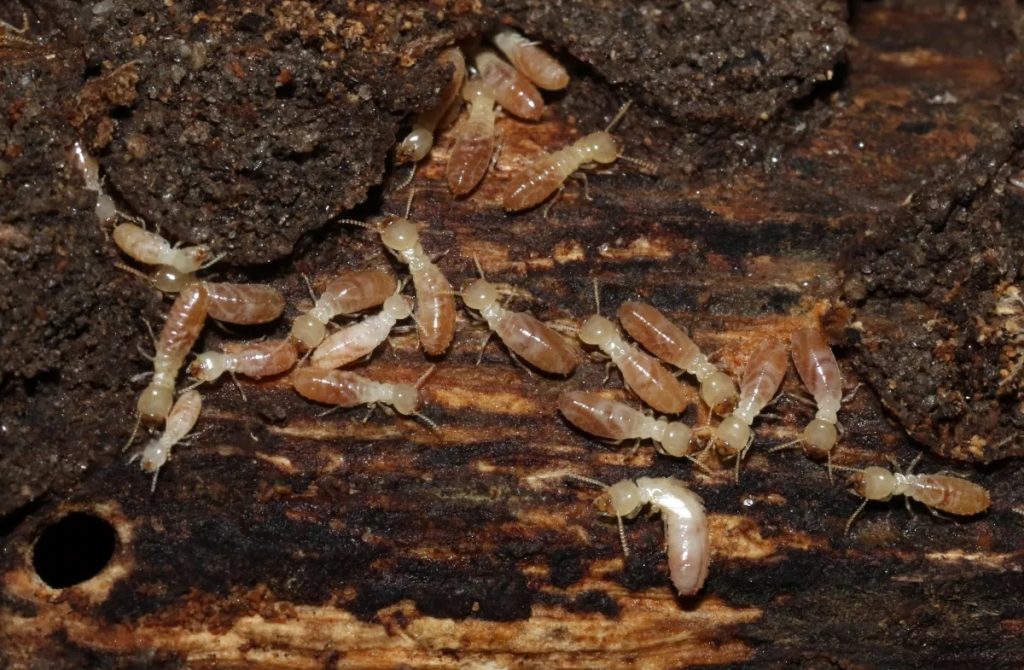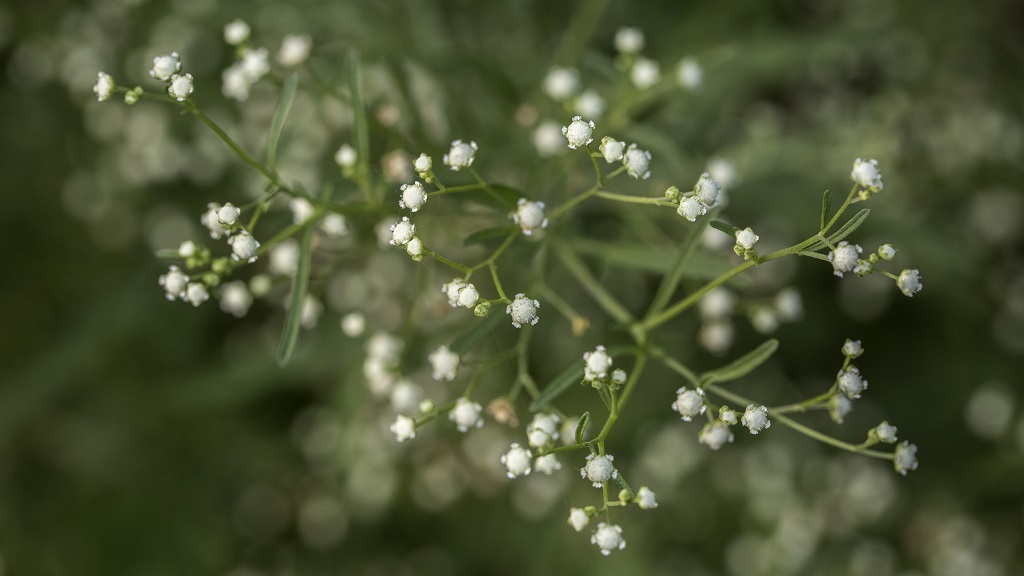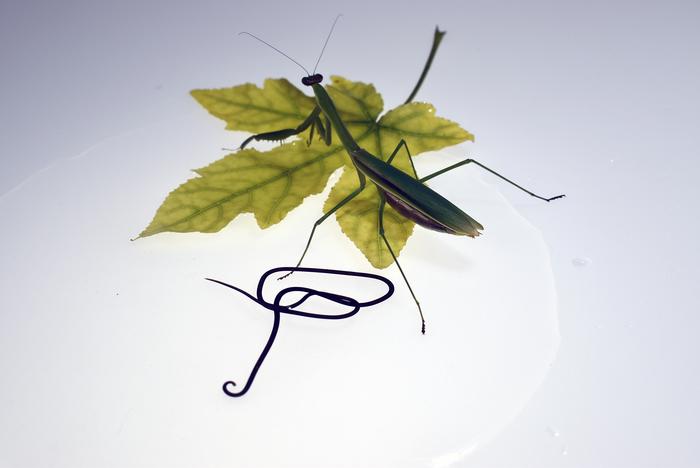
Subterranean Termites in Western U.S.
[ad_1]
ENTOMOLOGY TODAY LEAVE A COMMENT
The western U.S. is home to two known native species of subterranean termites, Reticulitermes hesperus (shown here) and Reticulitermes tibialis. But a new analysis shows R. hesperus is likely a species complex of at least two distinct species, and at least five species Reticulitermes in all may be present in California. A better understanding of these separate subterranean termite species and their behaviors will be essential for effective management. (Photo by James Bailey via iNaturalist, CC BY-NC 4.0)
By Andrew Porterfield
Andrew Porterfield
Subterranean termites in the genus Reticulitermes are common pests in North America, responsible for significant damage to wooden structures. The scientific literature maintains that the western United States is home to two native species of termites: Reticulitermes hesperus in more coastal regions from British Columbia to Southern California, and Reticulitermes tibialis in more arid inland regions.
However, researchers at the University of California, Riverside, the U.S. Forest Service, and the University of California Cooperative Extension have found evidence of additional Reticulitermes species in the western U.S. Using a series of techniques including cuticular hydrocarbon profiles (CHC), behavior studies (including reproductive flight/swarm timing), and DNA sequencing, the researchers found that Reticulitermes hesperus is in fact one species in a complex of multiple reproductively isolated species and that as many as five species of Reticulitermes may exist in California alone. None of these species in California was identified as R. tibialis. The researchers report their findings in a new study published in October in the Journal of Economic Entomology.
Determining speciation and genetic diversification among termites that recycle wood in natural environments is important to understand their ecology and diversity, as well as to better understand the behavior of more destructive termites and to find more efficient and less environmentally harmful ways of controlling them.
Chow-Yang Lee, Ph.D., professor and endowed presidential chair in urban entomology at UC Riverside, coordinated a team of research scientists and technicians who collected termites from residential sites and field locations in northern and southern California and in Arizona, Nevada, Utah, and New Mexico. Alates (the termites’ winged, swarming, reproductive stage) were captured during their spring, fall, and winter flights. Workers and soldiers in foraging groups were collected in conjunction with studies on taxonomy, foraging behavior, and control of termite colonies with baits. They used a number of techniques to separate the termite species:
- Cuticular hydrocarbon profiles. Insect species have a distinct mixture of wax components on the outside of their exoskeleton, or cuticle, consisting of combinations of hydrocarbons, fatty acids, alcohols, waxes, glycerides, phospholipids, and glycolipids. Focusing only on the hydrocarbon components, unique chemical “fingerprints” were discovered by chemical analyses using gas chromatography and mass spectrometry. Separation of groups, or phenotypes, by their chemical fingerprints was confirmed by studies of agonistic or aggressive behavior, correlation of mating flights of two phenotypes, and genetics using one mitochondrial DNA gene.
- DNA extraction and sequencing of mitochondrial DNA. Focusing these techniques on cytochrome oxidase II and 16s ribosomal RNA genes and two relatively conserved stretches of DNA that are routinely used to differentiate species provided a powerful examination of the previously identified species using characterization of cuticular hydrocarbon mixtures. Sequences were compared to existing termite DNA sequences on file with GenBank, one of the world’s largest genetic databases.
- Mating flights and swarming patterns. These behaviors were compared between termite species identified by cuticular hydrocarbon profiles and genetic groupings.
A new study finds that the termite Reticulitermes hesperus is likely a species complex of at least two distinct species, and at least five species Reticulitermes in all may be present in California. The study, published in October in the Journal of Economic Entomology, was conducted by a group of six researchers: Top row, left to right: Shu-Ping Tseng, Ph.D., University of California, Riverside; Andrew Sutherland, Ph.D., BCE, UC Cooperative Extension; and Michael Haverty, Ph.D., U.S. Forest Service. Bottom row, left to right: Chow-Yang Lee, Ph.D., UC, Riverside; Casey Hubble, UC Cooperative Extension, and Lori Nelson, U.S. Forest Service. (Photos courtesy of Chow-Yang Lee, Ph.D.)
The researchers determined that colonies that produce alates (swarmers) in the spring were R. hesperus, and colonies that produce alates in the fall and winter represent a different, undescribed species, based on differences in chemical characteristics and genetics. These results strongly indicated reproductive isolation between separate species. In addition to these two species, chemical and genetic evidence showed the possibility of at least three more undescribed species in California. The two to three species were identified as sympatric (i.e., genetically distinct, reproductively isolated, and living in the same area) in several areas of California.
The combination of chemical and genetic identification techniques has become important for identifying and differentiating Reticulitermes species, the researchers say. Morphological examination has not been reliable for identifications, largely due to vague or inadequate species descriptions, wide variations in size and shape of the castes (workers, soldiers, and alates) in termite colonies, and the challenges involved in collecting specimens of soldiers and alates in the same sample. Even genetic sequencing data alone had its issues—the team found many Reticulitermes genetic specimens entered into GenBank were misidentified.
“Several, but not all, of the species of Reticulitermes are known to damage wooden structures, but their natural habitat and behavior remained poorly understood,” the researchers write in an email interview. This poor understanding has created challenges to termite management efforts, especially with methods utilizing behavioral traits.
“Historically, controlling termites involved using highly toxic, long-lasting pesticides applied to the soil around buildings without detailed knowledge of termite biology,” the researchers say. “With the introduction of slow-acting termite baits, a deeper understanding of termite species, colony size, foraging territory, and seasonal foraging activity become crucial. Identifying the local termite species and understanding their seasonal behaviors become essential for effective subterranean termite management.”
And, the research is just beginning. “Our understanding of the diversity and ecological roles of subterranean termites in California, especially in proximity to wooden structures, is still in its early stages,” they say.
Read More
Journal of Economic Entomology
Andrew Porterfield is a writer, editor, and communications consultant for academic institutions, companies, and nonprofits in the life sciences. He is based in Camarillo, California. Follow him on Twitter at @AMPorterfield or visit his Facebook page.
SHARE THIS:
[ad_2]








